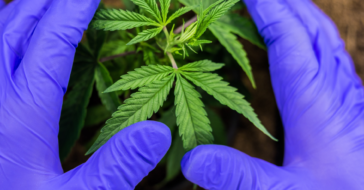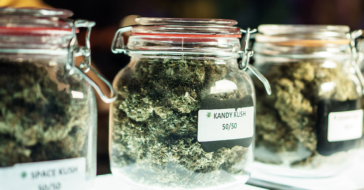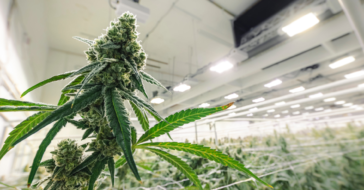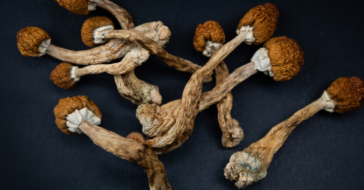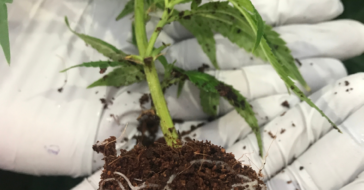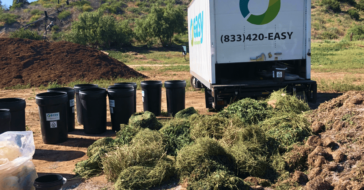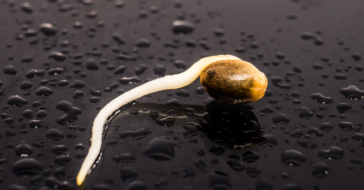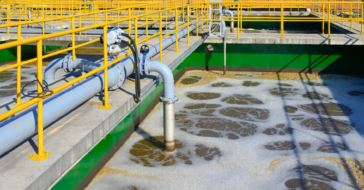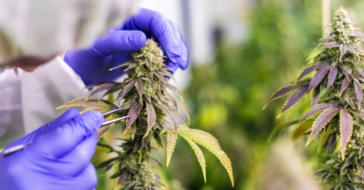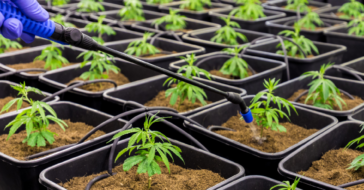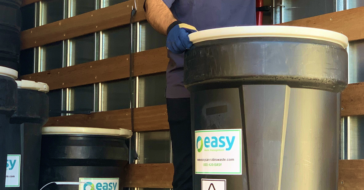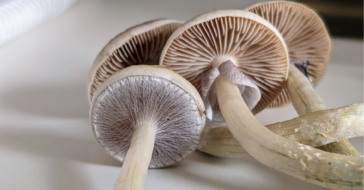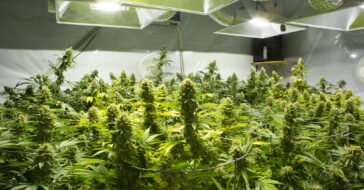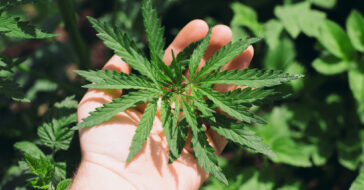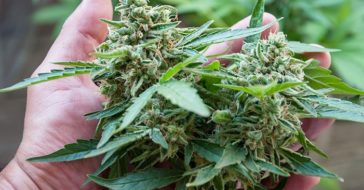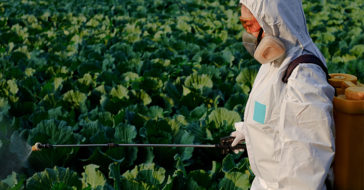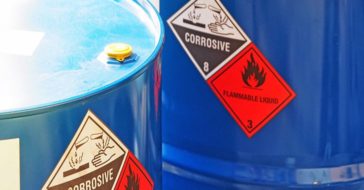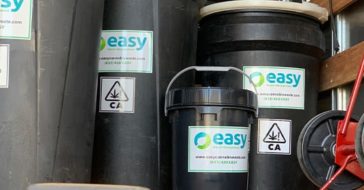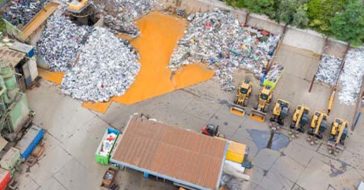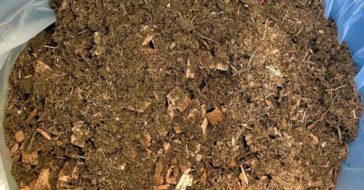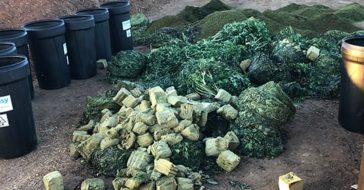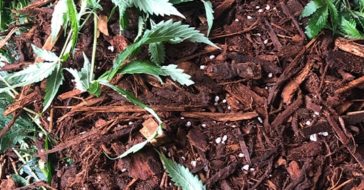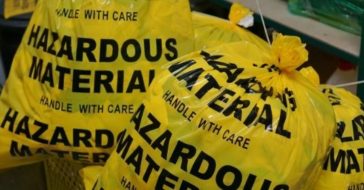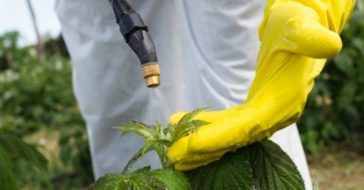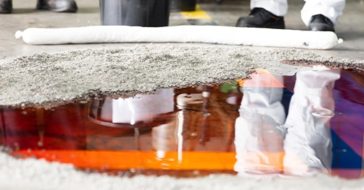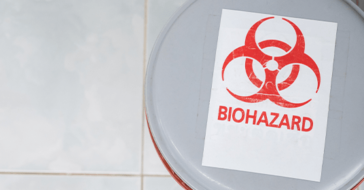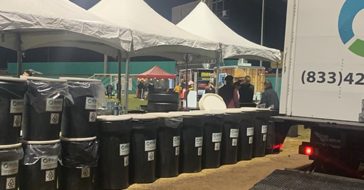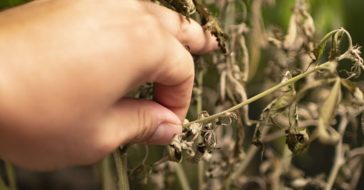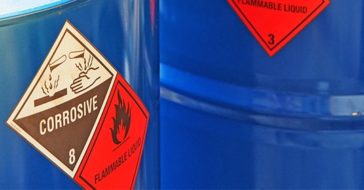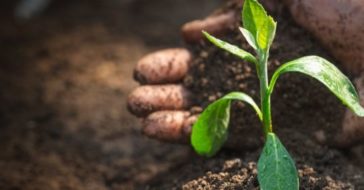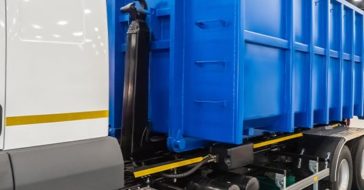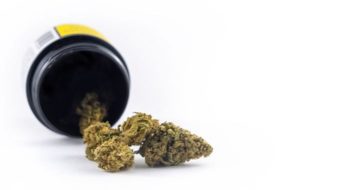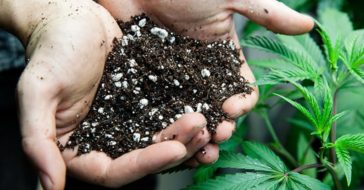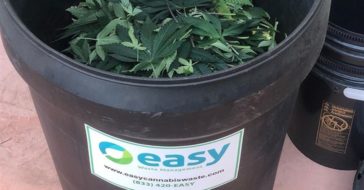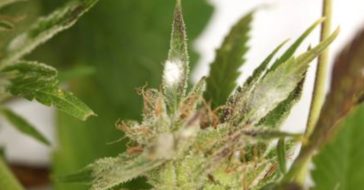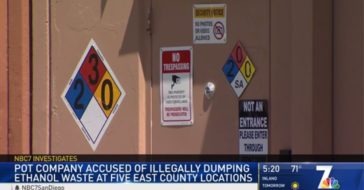For businesses venturing into California’s cannabis market, understanding the intricacies of proper disposal of marijuana plants and other types of waste is not just smart business – it’s a green necessity.
Whether your business is geared toward manufacturing or selling marijuana for recreational or medicinal purposes, ensuring you have the proper waste management procedures in place is important. You may be a grower, dispensary or distributor, but all must abide by strict waste disposal regulations.
Here’s a step-by-step guide that describes how your business should dispose of marijuana plants and waste in California so that you can ensure your business remains compliant.
Step 1: Develop A Cannabis Waste Management Plan
A comprehensive cannabis waste management plan stands as an important component of your operational framework and is mandated under the California Cannabis Track-and-Trace (CCTT) system. This plan outlines the methodologies you employ for managing all marijuana waste and cannabis waste generated on your premises.
mandated under the California Cannabis Track-and-Trace (CCTT) system. This plan outlines the methodologies you employ for managing all marijuana waste and cannabis waste generated on your premises.
Marijuana waste can be disposed of in several ways, including landfills, composting, and incineration. However, each method has its own regulations. For example, you can’t simply throw marijuana plants or waste in a pile and light it with a match.
As you develop your waste management plan, it’s important to outline exactly how you plan to dispose of any waste that is no longer usable. Experienced cannabis waste disposal companies can help with this process, which we’ll discuss later in this article.
Your waste management plan must include every facet of waste disposal, even if the disposal method involves on-site handling of non-hazardous cannabis waste through practices like composting or mulching. In cases where waste is transported off-site, your plan should outline particulars such as the selection of waste receptacles and the security measures implemented for these containers.
Key elements to include in your waste management plan include:
-
- Identification of the various types of waste generated by your business, whether that is plant material, packaging, hazardous materials or other byproducts
- Categorization of waste into distinct groups, differentiating between organic and non-organic waste, hazardous waste and recyclable materials
- Establishment of protocols for waste handling, including collection, storage and internal handling procedures within your facility
- Implementation of a waste collection schedule, whether it be daily, weekly or on an as-needed basis
- Procedures for waste sorting and on-site storage
- Composting procedures, whether conducted on-site or off-site
- Precautions for handling hazardous waste to ensure the safety of employees and the public
- Transportation protocols governing the movement of cannabis waste to appropriate facilities, including designated transport personnel
- Disposal methods such as landfill disposal, incineration, composting or any other specialized considerations
- Documentation and reporting procedures, including manifests, disposal receipts and other requisite reporting obligations
- Employee training in waste handling protocols
It’s also critical for the safety of your employees and community to have contingency plans in place to address emergencies effectively. These plans should include the hazards present and detail the protocols established to manage emergencies such as spills, leaks or fires.
While you may have created a cannabis waste management plan, it’s just as important to regularly review and revise it as regulations change or your business evolves.
Step 2: Designate A Secure Area For Your Marijuana Plants And Waste
Designating a secure area for your marijuana plants and waste will help mitigate potential risks associated with cannabis cultivation and waste management.
First, identify a dedicated space on your premises that meets legal requirements and provides adequate security measures. This area should be secluded and inaccessible to unauthorized individuals to prevent theft, tampering or accidental exposure.
Second, physical barriers like fences, gates or locked doors should be implemented to restrict entry to the designated area. Consider installing surveillance cameras or alarm systems further to enhance security and monitor activities within the space.
Last, clear protocols for accessing these secure areas must be established, ensuring that only authorized personnel with proper training and credentials are granted entry. Regularly review and update access control procedures to maintain the integrity of the designated space.
The area where you store marijuana waste should be distinct from other waste storage areas and equipped with appropriate containers and labeling to facilitate proper segregation and disposal.
By designating a secure area for your marijuana plants and waste, you not only adhere to regulatory requirements but also safeguard against potential risks and ensure the integrity of your cannabis operations.
Step 3: Separate Your Waste
Prior to disposal, a crucial step in waste management involves segregating marijuana waste from other waste materials.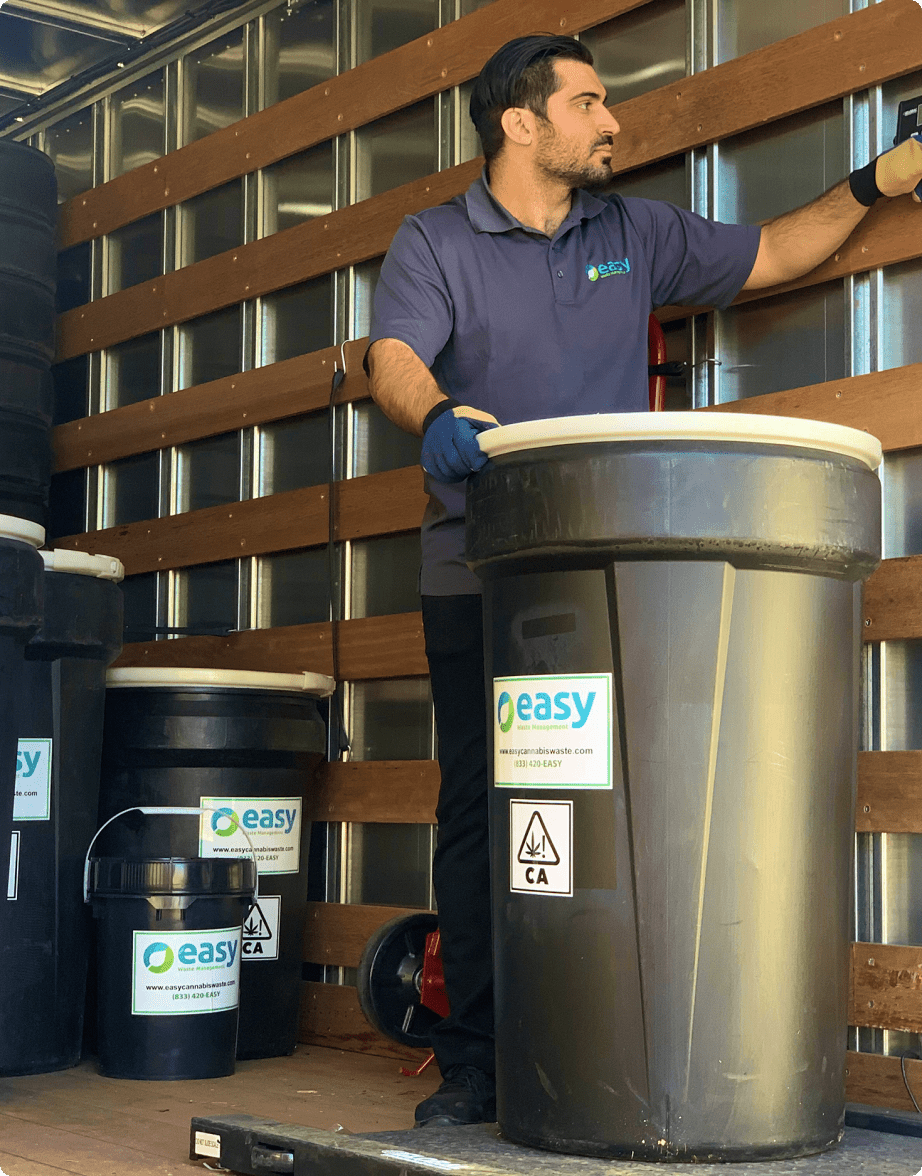 Failure to do so not only poses risks to employees but also leads to contamination of other waste streams.
Failure to do so not only poses risks to employees but also leads to contamination of other waste streams.
As a business, you likely generate many different waste streams. Some may be hazardous, while other waste streams are likely non-hazardous.
Compliance with both state and federal regulations mandates the separation of marijuana waste. Certain states even necessitate the storage of marijuana waste in a dedicated, secure area isolated from other waste products.
For effective segregation, you should use specially designated waste containers with clear labeling. These containers should be securely stored using the tips in the section above to restrict access to authorized personnel only.
Opt for containers crafted from robust materials such as heavy-duty plastic or metal, ensuring resistance to tampering and resilience during transportation.
Educate all staff members about the significance of segregating marijuana waste and to familiarize them with the designated containers designated for this purpose, minimizing the risk of inadvertent mixing with other waste streams generated by your business.
Step 4: Render Marijuana Waste Unusable And Unrecognizable
One of the most important regulations that govern marijuana and cannabis waste is the rule that you must render any cannabis waste that has come into contact with THC unusable and unrecognizable.
Here are some guidelines for rendering of cannabis waste unusable and unrecognizable:
- Cannabis flowers or products failing to meet testing or quality standards must be rendered unusable before disposal.
- Recalled cannabis flowers or products must undergo rendering after a minimum 72-hour quarantine period.
- Rendering of cannabis flowers and products should be conducted under video surveillance, except when performed during active cultivation activities in licensed cultivation premises.
- Samples held by licensed testing laboratories can be rendered unrecognizable and unusable after a minimum of 45 business days post-analysis.
What constitutes “unusable” and “unrecognizable”? Prior to disposal, all cannabis plant materials and by-products must be dismantled to the extent that their original form cannot be identified, and they must be destroyed to prevent any potential consumption or use.
However, methods for rendering cannabis waste unusable or unrecognizable vary. While some companies may opt for approved detergents or coatings to render the waste unusable, others may choose to grind the materials and blend them with non-consumable solid waste.
Step 5: Track, Trace And Record
Every cannabis license issued by the state of California must use the California Cannabis Track-and-Trace (CCTT) system for the recording and monitoring of their cannabis inventory.
the recording and monitoring of their cannabis inventory.
Referred to as “seed to sale” reporting, this system tracks cannabis products across the entire supply chain, spanning from cultivation to the final sale.
The primary objective of the CCTT system is to uphold transparency, accountability and regulatory adherence within California’s cannabis industry. Leveraging specialized software and databases, the system monitors every stage of a cannabis product’s lifecycle.
Key focal points of the CCTT system include:
- Cultivation monitoring
- Harvesting and processing activities
- Distribution channels
- Transportation logistics
- Retail sales operations
- Regulatory reporting and compliance
- Recall initiatives and safety measures
- Waste disposal procedures
To integrate with the system effectively, you must assign a unique non repeating identifier (UID) to each immature lot, flowering plant or distinct cannabis product.
As a cannabis waste generator, strict compliance with the regulations outlined in California’s CCTT system is crucial.
However, temporary cannabis licensees are exempt from utilizing the CCTT system. Instead, businesses holding temporary cannabis licenses must manually document all sales and transfers through paper sales invoices or shipping manifests, as stipulated by the California Department of Food and Agriculture.
Who Can Help: A Marijuana Waste Disposal Company
Managing your cannabis waste can be time-consuming and challenging. While California mandates that licensed disposal companies handle the transportation of hazardous waste to designated facilities for proper treatment or disposal, you likely have several waste streams that all have their own disposal requirements. Even some cannabis waste streams may be classified as non-hazardous waste.
Working with a waste disposal company experienced in handling marijuana and other types of cannabis waste can help ensure any waste you generate reaches its end destination safely.
However, not all waste transporters offer the same level of service. There exists a distinction between companies that merely fulfill the basic legal requirements and those that emerge as trusted allies for your business.
The best cannabis waste management company will:
- Identify the specific types of waste generated by your business and ensure its proper routing to the appropriate disposal facilities. Your chosen disposal company may need to coordinate transportation to multiple facilities.
- Collaborate with you to establish onsite storage protocols and conduct employee training on the correct utilization of containers.
- Formulate a comprehensive waste management plan that includes all areas of your operations and addresses your primary concerns.
- Maintain meticulous records within an updated system, facilitating easy access to vital information when needed.
- Develop an emergency response strategy to address potential accidents or unforeseen incidents effectively.
- Establish a waste pickup schedule tailored to align with your production schedule and operational needs.
As a cannabis business, your requirements are distinctive to your enterprise alone. It’s important that the services offered by your waste disposal partner align with these unique needs, enabling you to effectively achieve your waste management objectives.






